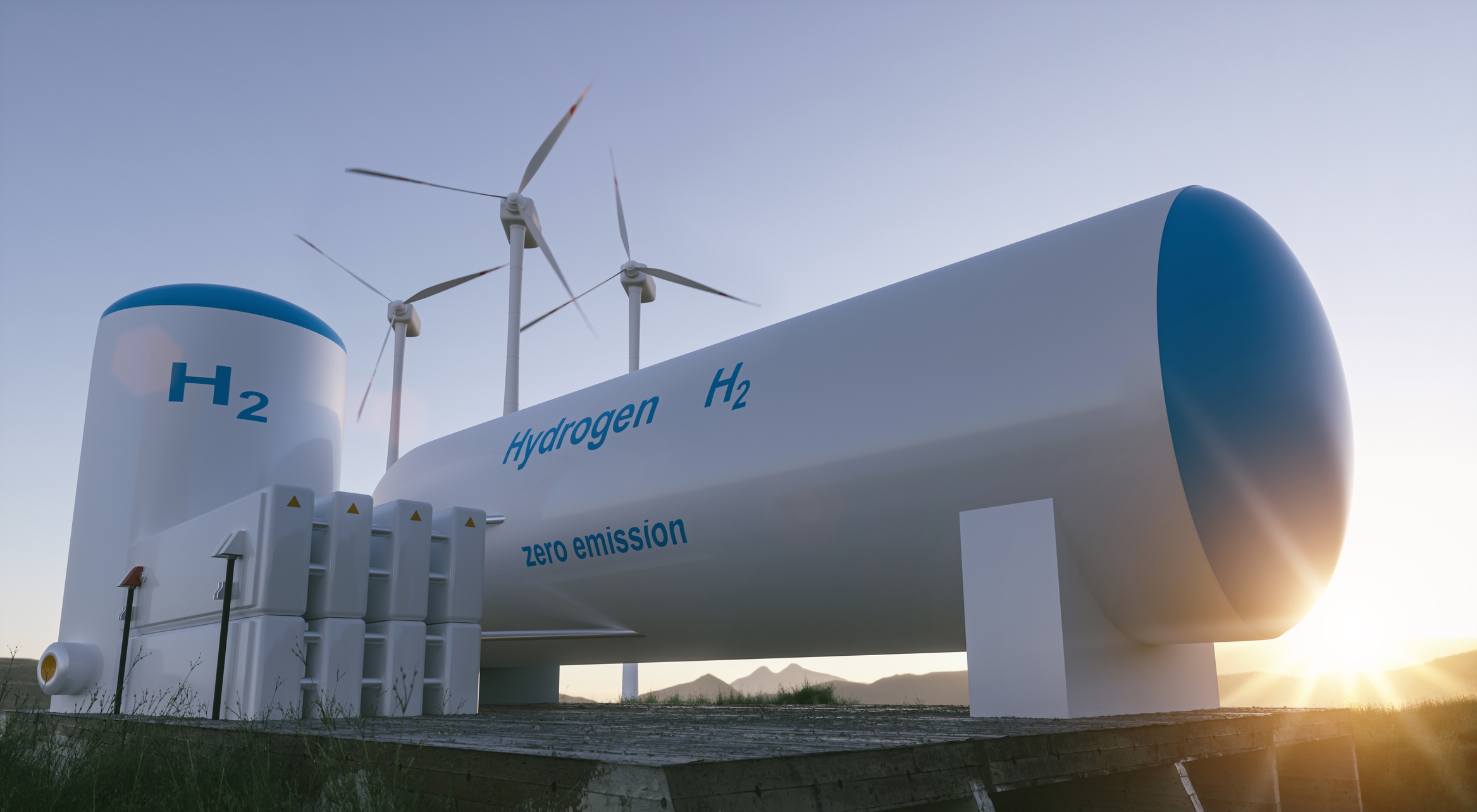Green hydrogen in the energy transition
As a renewable energy source with huge potential and a multitude of uses, green hydrogen will play a key role in the energy transitionGreen hydrogen is set to play a leading role in the energy transition. Green hydrogen currently accounts for less than 1 % of the total amount of hydrogen produced. However, global demand for green hydrogen and its applications is expected to increase exponentially over the next 20 years, meaning that this renewable energy source will play an important role in the energy transition. Fuel is just one of the uses of green hydrogen, while it can also be used for industrial and domestic purposes.
It is therefore no wonder that governments, businesses, investors and consumers are so interested in green hydrogen. In fact, according to a report by the Hydrogen Council, by 2030, USD 300 billion will be invested in projects to develop green hydrogen as a clean source of energy.
This momentum also requires support from institutions and the development of significant infrastructure to manage the production, transport and use of hydrogen.
Green hydrogen: key to decarbonisation
If we want to fulfil the Paris Agreement and limit the rise in global temperature to 1.5°C, we still have a lot of work to do. Years after the Paris Agreement was signed, its outcome has not been entirely positive. However, according to IRENA (International Renewable Energy Agency), the decarbonisation of the economy is the way forwards for both reducing CO2 emissions and facilitating economic recovery after the coronavirus crisis, and the organisation is calling for a Green Recovery.
 It is now more important than ever that we support an energy transition that is focused renewable energies and which makes fossil fuels a thing of the past. Change is necessary in all sectors: from electricity generation to heating to vehicles. However, there are still industries for which this transition is very complicated. These include the steel, cement, long-distance road transport, maritime transport and aviation industries.
It is now more important than ever that we support an energy transition that is focused renewable energies and which makes fossil fuels a thing of the past. Change is necessary in all sectors: from electricity generation to heating to vehicles. However, there are still industries for which this transition is very complicated. These include the steel, cement, long-distance road transport, maritime transport and aviation industries.
As IRENA emphasises, green hydrogen provides a link between sustainable energy generation and these sectors. Let's take a look at an example.
The steel industry involves heating iron ore with coking coal in industrial furnaces at very high temperatures. This sector contributes significantly to global warming, as it is reported to be responsible for 8 % of global CO2 emissions. By replacing the coal used in the furnaces with green hydrogen, steel is still obtained but water vapour is produced, rather than large clouds of CO2. However, this energy is currently very expensive and experts say it could take years before the process becomes economically viable.
For a green hydrogen economy to become a reality, regulatory frameworks are needed to drive investment, research and development of the technologies that enable hydrogen to be stored, transported and used.
Green hydrogen for the energy transition
Fortunately, there are already projects under way around the world to give green hydrogen the boost it needs. This sector will undoubtedly be one of the main beneficiaries of the Next Generation Europe plan and the Green New Deal. The European Union is set to produce 1 million tonnes of green hydrogen by 2024. In 2050, the EU estimates that hydrogen will account for 14 % of the energy mix, compared to the 2 % it represents today. Which countries use the most green hydrogen?
In Latin America, Chile is leading the green hydrogen drive. At the end of 2020 it presented its National Green Hydrogen Strategy. This took the form of a plan with 3 main objectives: to produce the cheapest green hydrogen on the planet by 2030, to be among the top three exporters by 2040 and to have 5GW of electrolysis capacity under development by 2025.
Thanks to its extensive renewable energy resources—particularly wind and solar power resources—Australia is currently leading production plans for this new clean fuel, with proposals to build five megaprojects in the country.
China is the world's leading producer of hydrogen but so far it has used fossil fuels to generate almost all of that energy. However, the country is taking its first steps in the green hydrogen market by constructing a mega-project in the Inner Mongolia Autonomous Region in the north of the country. This project aims to generate 5GW from wind and solar energy and is expected to be ready in 2021.
Reducing the cost of green hydrogen
Although interest in green hydrogen is reaching unprecedented levels, several barriers still prevent it from fully contributing to the energy transition. The main obstacle is the high cost of green hydrogen compared to grey hydrogen and sources from fossil fuels.
With the right political support, the cost of hydrogen from renewable sources will fall much more sharply than previously estimated. A new report by BloombergNEF (BNEF) predicts that its cost will have fallen by 85 % by 2050.
This price reduction is linked to the decrease in the cost of renewable energies, as well as the development of means of transporting and storing green hydrogen.
The fact is that there is still a long way to go until green hydrogen takes its rightful place in energy transition and sustainable development. However, when it comes to green hydrogen, the future is looking bright. The race for a sustainable future that is led by renewable energies is taking off like never before.







